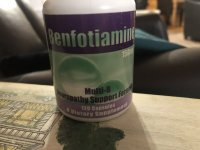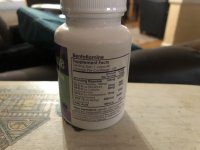jward
passin' thru
California announces plan to produce $30 insulin
Updated on: March 18, 2023 / 10:34 PM / CBS/AP
California Gov. Gavin Newsom announced Saturday that the state has launched a 10-year partnership with a drug maker to produce insulin for its residents at a significantly lower cost.
The state plans to sell insulin at a cost of $30 for a 10-milliliter vial, Newsom said in a press conference Saturday near Los Angeles. The insulin will be manufactured by Civica Rx, a nonprofit drug company. The product is not expected on store shelves until at least next year.
"Thank you for being willing to disrupt the market," Newsom said. "Thank you for being willing to save lives without fear of failure, but more importantly without money being your motivator."
Back in July 2022, Newsom announced that he had approved a budget that allocated $100 million for California to make its own insulin.
Many questions remain, however. The state and Civica have yet to locate a California-based manufacturing facility. Regulatory approvals will be needed. It's possible competitors could slash their prices and undercut the state product.
This also comes after several major insulin manufacturers recently announced that they will be slashing prices too. Eli Lilly and Novo Nordisk said this month they will lower the cost of insulin by up to 70% and 75%, respectively.
Eli Lilly said it would automatically cap out-of-pocket insulin costs at $35 for insured individuals, and expand its Insulin Value Program.
Anthony Wright, executive director of Health Access California, a statewide consumer health care advocacy group, welcomed Newsom's announcement, saying efforts by California and others to develop a competing generic are likely a factor in getting insulin manufacturers to cut their prices.
Still, there are obstacles.
"The work to develop a generic, get FDA approval and set up manufacturing will take real time," Wright said in an email. "There may even be more time in the effort to get doctors to prescribe the drug, insurers and (pharmacy benefit managers) to include it on their formularies and patients and the public to accept and ask for it."
There could be other risks. State analysts have warned that California's entry into the market could prompt other manufacturers to reduce the availability of their drugs, a potential unintended consequence.
Even with the challenges of entering a competitive, established market, Newsom said taxpayers would have "very ample protections."
If for whatever reason the deal didn't work out to the state's benefit, "there's all kinds of provisions that would allow us to ... pull out," he said.
According to state documents, the proposed program could save many patients between $2,000 and $4,000 a year. In addition, lower costs could result in substantial savings because the state buys the product every year for the millions of people on its publicly funded health plans.
Just days ago, President Biden said his administration is focused "intensely" on lowering health care costs, including pressuring pharmaceutical companies to lower the costs of insulin. Legislation enacted last year capped copayments for insulin at $35 per month for Medicare beneficiaries. Biden has proposed extending that cap to all Americans.
The state of California also is exploring the possibility of bringing other drugs to market, including the overdose medication Naloxone. The drug, available as a nasal spray and in an injectable form, is considered a key tool in the battle against a nationwide overdose crisis.
"We are not stopping here," Newsom said.
posted for fair use

California announces plan to produce $30 insulin
The product is not expected on store shelves until at least next year.


